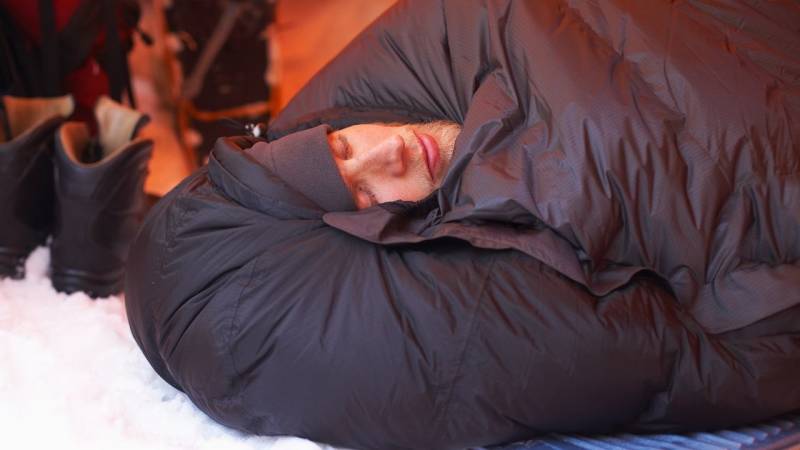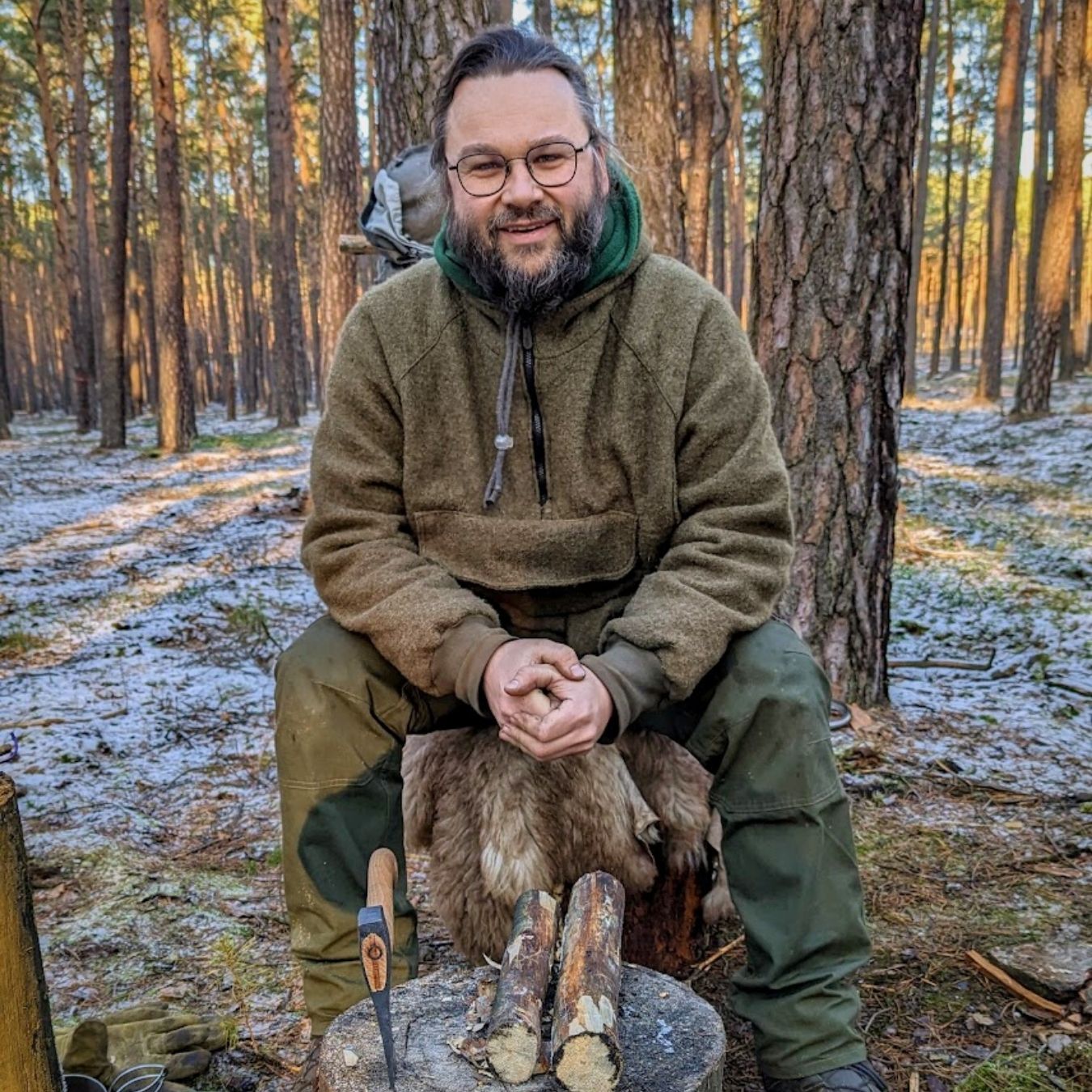
heat conservation
Noun
Meaning
Heat conservation refers to the practice of preserving and maximizing the heat generated in a survival, bushcraft, or outdoor setting. It is crucial for maintaining body temperature, preventing hypothermia, and ensuring overall comfort and safety in cold environments.
By employing various techniques and tools, such as insulating clothing, shelter construction, fire management, and efficient cooking methods, heat conservation allows individuals to stay warm and conserve energy in challenging outdoor situations. Understanding and implementing effective heat conservation strategies is essential for anyone venturing into the wilderness, engaging in camping, hiking, or other outdoor activities.

Examples
„I love going on camping trips in the winter. Heat conservation is crucial to stay warm and comfortable in the cold.“
„When building a shelter in the wilderness, it's important to consider heat conservation. Insulating the walls and using materials like pine needles can help retain warmth inside.“
„During a survival situation, finding ways to conserve heat becomes a top priority. Wrapping yourself in a space blanket or using a reflective shelter can help prevent hypothermia.“
„In a group setting, discussing heat conservation techniques is essential for everyone's well-being. Sharing tips and tricks on how to insulate clothing or create improvised heaters can make a significant difference.“
„As a bushcraft enthusiast, I always prioritize heat conservation in my outdoor adventures. Whether it's using a fire reflector or wearing multiple layers of clothing, staying warm is key to enjoying the wilderness.“
Origin
The term "heat conservation" originates from the field of thermodynamics and energy conservation. It is derived from the Latin word "conservare," which means "to preserve" or "to keep." The concept of heat conservation has its roots in the study of how heat energy can be conserved or preserved in various systems.
Heat conservation has evolved over time as scientists and engineers have developed a deeper understanding of the laws of thermodynamics. It has become an important principle in many fields, including engineering, physics, and environmental science.
In the context of survival and bushcraft, heat conservation refers to the techniques and strategies used to retain and conserve body heat in outdoor or wilderness settings. It is crucial for staying warm and preventing hypothermia in cold environments.
Heat conservation techniques include wearing appropriate clothing layers, insulating shelters, using fire and heat sources, and practicing efficient body heat management. These skills are essential for survival in extreme conditions and are often taught in wilderness survival courses and training programs.
Synonyms
Insulation, Thermal retention, Heat retention, Heat preservation, Heat trapping, Thermal insulation, Heat conservation, Heat management
Antonyms
Cooling, Loss, Dispersion, Wastage, Dissipation, Release, Leakage
Relatives
Insulation, Thermal energy, Body heat, Shelter, Fire, Clothing, Survival techniques, Hypothermia
Historical and cultural importance
Heat conservation is a term that holds great historical and cultural significance in the realm of survival and bushcraft. Throughout history, humans have had to find ways to protect themselves from extreme cold and harsh weather conditions. The ability to conserve heat was crucial for survival, especially in colder regions or during long expeditions.
In many indigenous cultures, heat conservation techniques were passed down from generation to generation, forming an integral part of their traditional knowledge. These techniques often involved using natural materials and resources to create insulation, such as animal furs, plant fibers, or even moss. Indigenous communities developed intricate methods to trap and retain body heat, allowing them to endure freezing temperatures and harsh climates.
Furthermore, heat conservation played a vital role in historical expeditions and exploration. Explorers and adventurers, such as polar explorers or mountaineers, relied on their ability to conserve heat to survive in extreme environments. They used various techniques, such as layering clothing, building insulated shelters, or using portable heating devices, to protect themselves from hypothermia and frostbite.
Today, heat conservation remains a fundamental skill in the world of survival and bushcraft. Whether you're camping in the wilderness, embarking on a winter hike, or facing a power outage during a storm, knowing how to conserve heat can be a matter of life and death. Understanding the historical and cultural significance of heat conservation helps us appreciate the wisdom and ingenuity of those who came before us, and inspires us to continue honing our skills in the art of staying warm in challenging environments.
More information about the term heat conservation
Heat Conservation: How to Stay Warm in the Wilderness
When venturing into the wilderness, one of the most crucial skills to have is the ability to conserve heat. In a survival situation, staying warm can mean the difference between life and death. In this article, I will share with you some essential tips and techniques for heat conservation in the great outdoors.
Layering: The Key to Effective Heat Conservation
Layering your clothing is the foundation of heat conservation. By wearing multiple layers, you create pockets of air that act as insulation, trapping your body heat and keeping you warm. Start with a moisture-wicking base layer to keep sweat away from your skin. Add an insulating layer, such as a fleece or down jacket, to provide warmth. Finally, top it off with a waterproof and windproof outer layer to protect against the elements.
Building a Shelter: Shielding Yourself from the Cold
Constructing a shelter is another vital aspect of heat conservation. A well-built shelter can shield you from wind, rain, and snow, helping to retain your body heat. Look for natural features like caves or overhangs, or use materials from your surroundings to create a makeshift shelter. Insulate the floor with leaves or branches, and cover the walls with additional foliage or a tarp if available.
Starting a Fire: Harnessing the Power of Heat
A fire is not only a source of light and comfort but also a valuable tool for heat conservation. Learn how to start a fire using various methods, such as a fire starter, flint and steel, or friction-based techniques like the bow drill. Once your fire is roaring, position yourself close enough to feel the heat but not so close that you risk getting burned. Use rocks or logs to reflect the heat towards you, maximizing its effectiveness.
Insulating Your Sleeping Area: A Warm Night's Rest
Ensuring a good night's sleep is crucial for maintaining body heat. Insulate your sleeping area by placing a layer of leaves, pine needles, or a sleeping pad underneath you. Use a high-quality sleeping bag rated for the expected temperatures, and consider using a bivvy bag or a reflective emergency blanket for added insulation. Avoid sleeping directly on the ground, as it can draw heat away from your body.
Conserving Heat Through Nutrition and Hydration
Proper nutrition and hydration play a significant role in heat conservation. Eat high-calorie foods that provide sustained energy, such as nuts, dried fruits, and energy bars. Stay hydrated by drinking plenty of water, as dehydration can impair your body's ability to regulate temperature. Avoid alcohol and caffeine, as they can dehydrate you and increase heat loss.
Conclusion
Heat conservation is a fundamental skill for anyone venturing into the wilderness. By layering your clothing, building a shelter, starting a fire, insulating your sleeping area, and maintaining proper nutrition and hydration, you can stay warm and comfortable even in the harshest conditions. Remember, staying warm is not just a matter of comfort but a matter of survival.
Back to overview

